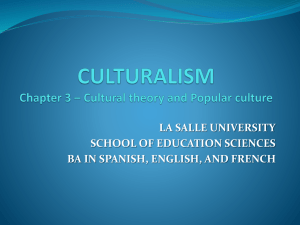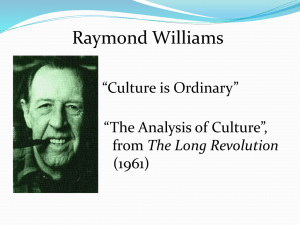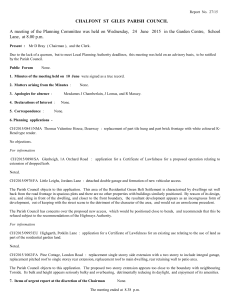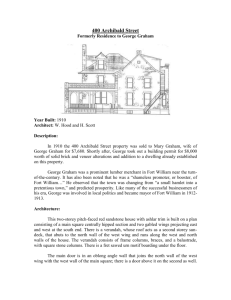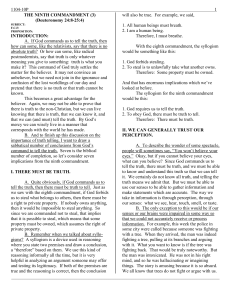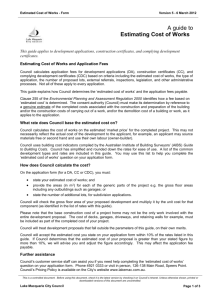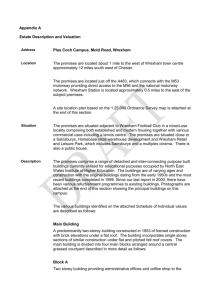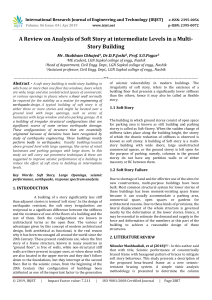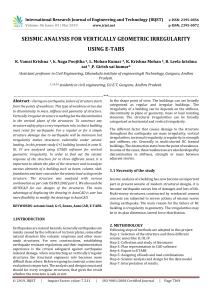Questions about Chapter 3
advertisement
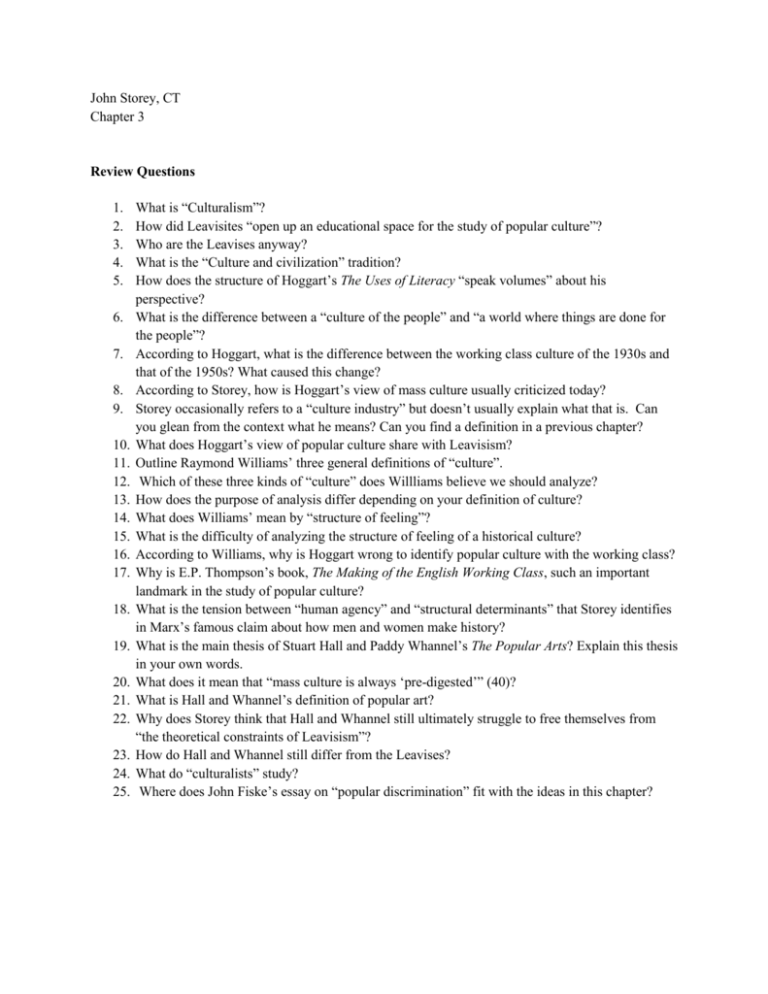
John Storey, CT Chapter 3 Review Questions 1. 2. 3. 4. 5. 6. 7. 8. 9. 10. 11. 12. 13. 14. 15. 16. 17. 18. 19. 20. 21. 22. 23. 24. 25. What is “Culturalism”? How did Leavisites “open up an educational space for the study of popular culture”? Who are the Leavises anyway? What is the “Culture and civilization” tradition? How does the structure of Hoggart‟s The Uses of Literacy “speak volumes” about his perspective? What is the difference between a “culture of the people” and “a world where things are done for the people”? According to Hoggart, what is the difference between the working class culture of the 1930s and that of the 1950s? What caused this change? According to Storey, how is Hoggart‟s view of mass culture usually criticized today? Storey occasionally refers to a “culture industry” but doesn‟t usually explain what that is. Can you glean from the context what he means? Can you find a definition in a previous chapter? What does Hoggart‟s view of popular culture share with Leavisism? Outline Raymond Williams‟ three general definitions of “culture”. Which of these three kinds of “culture” does Willliams believe we should analyze? How does the purpose of analysis differ depending on your definition of culture? What does Williams‟ mean by “structure of feeling”? What is the difficulty of analyzing the structure of feeling of a historical culture? According to Williams, why is Hoggart wrong to identify popular culture with the working class? Why is E.P. Thompson‟s book, The Making of the English Working Class, such an important landmark in the study of popular culture? What is the tension between “human agency” and “structural determinants” that Storey identifies in Marx‟s famous claim about how men and women make history? What is the main thesis of Stuart Hall and Paddy Whannel‟s The Popular Arts? Explain this thesis in your own words. What does it mean that “mass culture is always „pre-digested‟” (40)? What is Hall and Whannel‟s definition of popular art? Why does Storey think that Hall and Whannel still ultimately struggle to free themselves from “the theoretical constraints of Leavisism”? How do Hall and Whannel still differ from the Leavises? What do “culturalists” study? Where does John Fiske‟s essay on “popular discrimination” fit with the ideas in this chapter?
